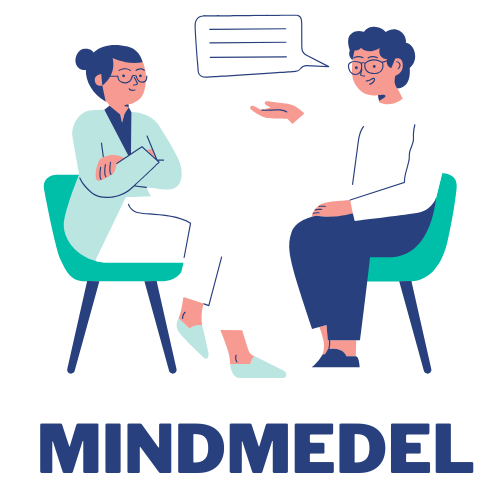Understanding the Fine Line Between Depression and Sadness:
Am I Experiencing Depression or Just Temporary Sadness? Exploring the Key Differences
We’ve all felt sad at one point or another. Whether it’s due to a lost opportunity, the end of a relationship, or a disappointing event, sadness is a common emotional response. However, there are times when sadness doesn’t fade—when it seems to overstay its welcome, turning into something more intense, persistent, and overwhelming. You may wonder, “Am I experiencing depression, or is this just temporary sadness?”
It’s crucial to understand the difference between the two because while sadness typically fades with time, depression can have long-lasting effects on your emotional, mental, and physical health. In this blog, I’ll explore the fine line between depression and sadness, providing clear distinctions to help you recognize what you’re feeling and whether it might be time to seek professional help. So, let’s dive in and discover how to better understand your emotions!
Key Takeaways
- Sadness is a natural, temporary emotional response to specific life events, while depression is a persistent mental health condition.
- Recognizing the difference between sadness and depression can empower you to seek timely intervention and appropriate support.
- Depression impacts daily life, while sadness typically doesn’t interfere with your ability to function normally.
- Feeling sad is a normal human experience, but depression often requires structured treatment for recovery.
- Acknowledging your emotional state can guide you toward better mental health, whether it’s addressing temporary sadness or chronic depression.
Am I Experiencing Depression or Just Temporary Sadness?
What Is Sadness?
Sadness is a universal emotion that arises as a natural reaction to life’s challenges. It can stem from specific events like the loss of a loved one, a breakup, or not achieving a personal goal. Sadness is generally temporary and tends to fade as time passes. You may feel down for a few hours or a couple of weeks, but with the right coping mechanisms, you eventually move forward.
- Temporary Nature: Sadness doesn’t linger indefinitely. With time, you regain your normal energy and motivation.
- External Triggers: It often stems from a particular event or circumstance.
- No Major Impact on Daily Life: While you might feel emotionally drained, sadness typically doesn’t stop you from functioning in your daily routine.
In short, sadness is a part of life. It’s normal, expected, and transient.
What Is Depression?
Depression, on the other hand, is a clinical condition that goes beyond sadness. It’s a mental health disorder that affects how you think, feel, and function. While sadness may arise from external events, depression tends to impact you even when there’s no clear trigger. The feeling of hopelessness, worthlessness, and lack of interest in things you once enjoyed are hallmarks of depression.
- Persistent Feelings: Depression doesn’t fade after a few days or weeks. It sticks around for months, sometimes years, if left untreated.
- Key Symptoms:
- Hopelessness and Worthlessness: Feeling like things will never get better.
- Loss of Interest: Things that once brought you joy no longer excite you.
- Physical Symptoms: Such as fatigue, sleep disturbances, and changes in appetite.
- Neurological Basis: Depression involves chemical imbalances in the brain, particularly with neurotransmitters like serotonin and dopamine.
If you find yourself feeling sad for weeks, with no relief, or if sadness prevents you from functioning, it might be time to recognize it as depression rather than just a temporary emotional state.
DSM-5-TR Criteria for Depression
The DSM-5-TR (Diagnostic and Statistical Manual of Mental Disorders, 5th Edition, Text Revision) provides a standardized list of criteria for diagnosing depression. These criteria focus on symptoms that affect mood, behavior, and daily functioning. To be diagnosed with major depressive disorder, individuals generally need to exhibit five or more of the following symptoms during the same two-week period:
- Depressed mood most of the day, nearly every day.
- Markedly diminished interest or pleasure in all, or almost all, activities.
- Significant weight loss or gain, or a decrease or increase in appetite.
- Insomnia or excessive sleeping.
- Fatigue or loss of energy.
- Feelings of worthlessness or guilt.
- Difficulty concentrating or making decisions.
- Thoughts of death or suicide.
If these symptoms are present and significantly impair your daily life, professional help is crucial.
Key Differences Between Depression and Sadness
Emotional Duration: Temporary vs. Chronic
One of the most noticeable differences between sadness and depression is duration.
- Sadness: Typically lasts a few hours to a couple of weeks. Once the external trigger resolves, sadness naturally fades.
- Depression: Lasts for weeks, months, or even years without intervention. It doesn’t go away on its own and can worsen over time.
Emotional Duration Comparison Table:
| Emotion | Duration | Trigger | Impact on Daily Life |
| Sadness | Short-term (hours/days/weeks) | External events | Temporary |
| Depression | Long-term (months/years) | No clear trigger | Impairs function |
Impact on Daily Functioning
When it comes to depression versus sadness, one of the most significant distinctions lies in how much it affects your day-to-day life.
- Sadness: You might feel upset or down, but you can still carry out daily activities. You still interact with loved ones, go to work or school, and maintain some form of routine.
- Depression: The impact on your life is more severe. Simple tasks like getting out of bed, showering, or going to work can feel overwhelming. Relationships may suffer, and you may withdraw from activities that you once enjoyed.
Physical Symptoms of Depression
While sadness generally doesn’t have a physical component, depression often does. You might experience:
- Fatigue: Chronic tiredness, even after a full night’s sleep.
- Changes in Appetite: Either eating too much or too little.
- Sleep Disturbances: Insomnia or sleeping excessively.
- Somatic Symptoms: Unexplained aches and pains, headaches, or gastrointestinal issues.
Thought Patterns: Pessimism vs. Realistic Optimism
Sadness might bring about temporary negative thinking but is often balanced by hope or the belief that things will improve. In contrast, depression leads to persistent negative thoughts and cognitive distortions, like:
- “I’m not good enough.”
- “Things will never get better.”
- “There’s no point in trying.”
These thought patterns can make depression incredibly challenging to overcome without intervention.
How to Recognize the Signs of Depression
Behavioral Red Flags
Recognizing the early signs of depression can help you seek help before it worsens. Common behavioral changes include:
- Withdrawal from social activities or hobbies.
- Lack of energy to engage in daily activities.
- Difficulty concentrating or making decisions.
Emotional and Cognitive Indicators
- Guilt or worthlessness that doesn’t seem to subside.
- Feelings of hopelessness about the future.
- Negative self-talk and pervasive self-criticism.
Physical Symptoms
- Chronic tiredness, lack of sleep, or oversleeping.
- Appetite changes (eating too much or too little).
- Somatic symptoms: Unexplained aches and pains.
Common Myths About Depression
There are many misconceptions about depression, such as:
- “Depression is just sadness” – Depression is far more complex.
- “You can snap out of it” – Depression is not a choice or something you can overcome with sheer willpower alone.
- “Depression only affects adults” – Depression can affect people of all ages, including children and adolescents.
It’s important to dispel these myths so that people understand depression is a serious mental health issue that requires professional care.
Coping Strategies for Sadness vs. Depression
Coping with Sadness: Healthy Ways to Process Emotions
If you’re simply feeling sad, there are many healthy coping strategies you can use:
- Talk to a friend or family member.
- Engage in physical activity, like walking, yoga, or exercise.
- Journal your thoughts and feelings to gain perspective.
Managing Depression: More Intensive Support and Long-Term Strategies
When dealing with depression, the strategies are more intensive and may include:
- Therapy: Cognitive Behavioral Therapy (CBT) and other approaches.
- Medication: Antidepressants like SSRIs or SNRIs.
- Lifestyle Changes: Regular exercise, healthy eating, and sleep hygiene.
- Support Groups: Peer support can be essential for recovery.
Self-Help Tips for Mild Depression Symptoms
If you’re experiencing mild depression, here are some steps you can take:
- Practice mindfulness exercises.
- Incorporate regular physical activity into your day.
- Seek out a support system from friends, family, or a therapist.
Can Sadness Evolve into Depression?
The Link Between Prolonged Sadness and Depression
If sadness lasts for more than a couple of weeks, it can begin to morph into depression. Chronic sadness may indicate an underlying issue that requires attention.
- Signs sadness is turning into depression:
- Persistent low mood lasting over two weeks.
- Development of physical symptoms (weight changes, lack of sleep).
Early Intervention is Key
Recognizing the shift from sadness to depression early is crucial in preventing it from becoming a long-term struggle.
How to Help Someone Who Might Be Struggling
Recognizing the Signs of Depression in Others
You can spot depression in loved ones by looking for:
- Mood swings or increased irritability.
- Withdrawal from social situations.
- Physical symptoms: such as chronic tiredness or unexplained aches.
What to Say (and What Not to Say) to Someone Feeling Depressed
- Do: Offer empathy, e.g., “I’m here for you”.
- Don’t: Say things like “Just think positive” or “Snap out of it”.
When to Encourage Professional Help
- Encourage your loved one to seek therapy or a professional evaluation if symptoms persist or worsen.
Breaking the Stigma: Talking Openly About Depression and Sadness
Normalizing Conversations Around Mental Health
Opening up about depression and sadness can reduce the stigma associated with these conditions. The more we talk about it, the more we normalize it.
How Cultural Views Influence the Perception of Depression
Different cultures may perceive mental health issues in varied ways, which can impact diagnosis and treatment. It’s important to create empathetic and supportive environments regardless of cultural differences.
Recognizing and Addressing Your Emotional Health
Understanding the fine line between sadness and depression empowers you to take charge of your mental health. Whether you’re dealing with a temporary emotional setback or facing a more serious mental health issue, early intervention and support are key.
If you’re struggling with depression, don’t hesitate to seek help from a therapist or mental health professional. It’s okay to reach out for support—you don’t have to face it alone.




